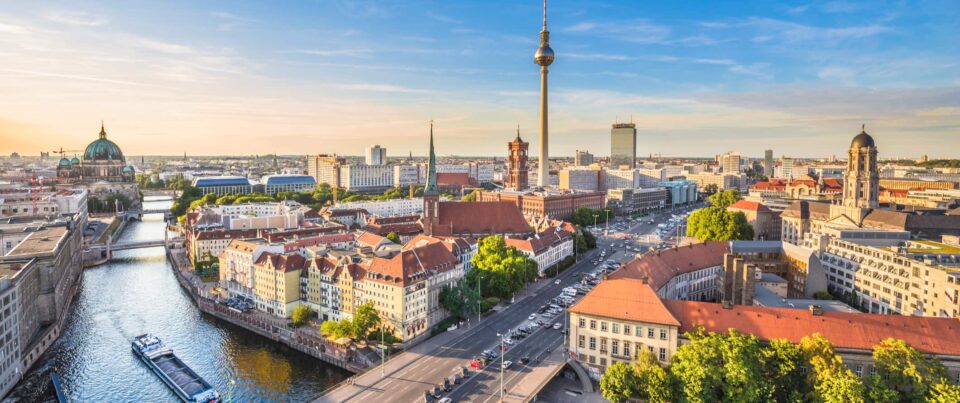Berlin is controversial. Some consider it gloomy and gray, while others admire the greenness of the parks, the variety of architecture and the dynamics of life. The capital of Germany can be loved or hated, but it can not be treated with indifference. To make up your mind about the city, take a breath of its air, walk through the streets and visit world-famous sights. A guide to Berlin — the main metropolis of Germany and one of the sixteen federal states of the country-will help you do this.
History
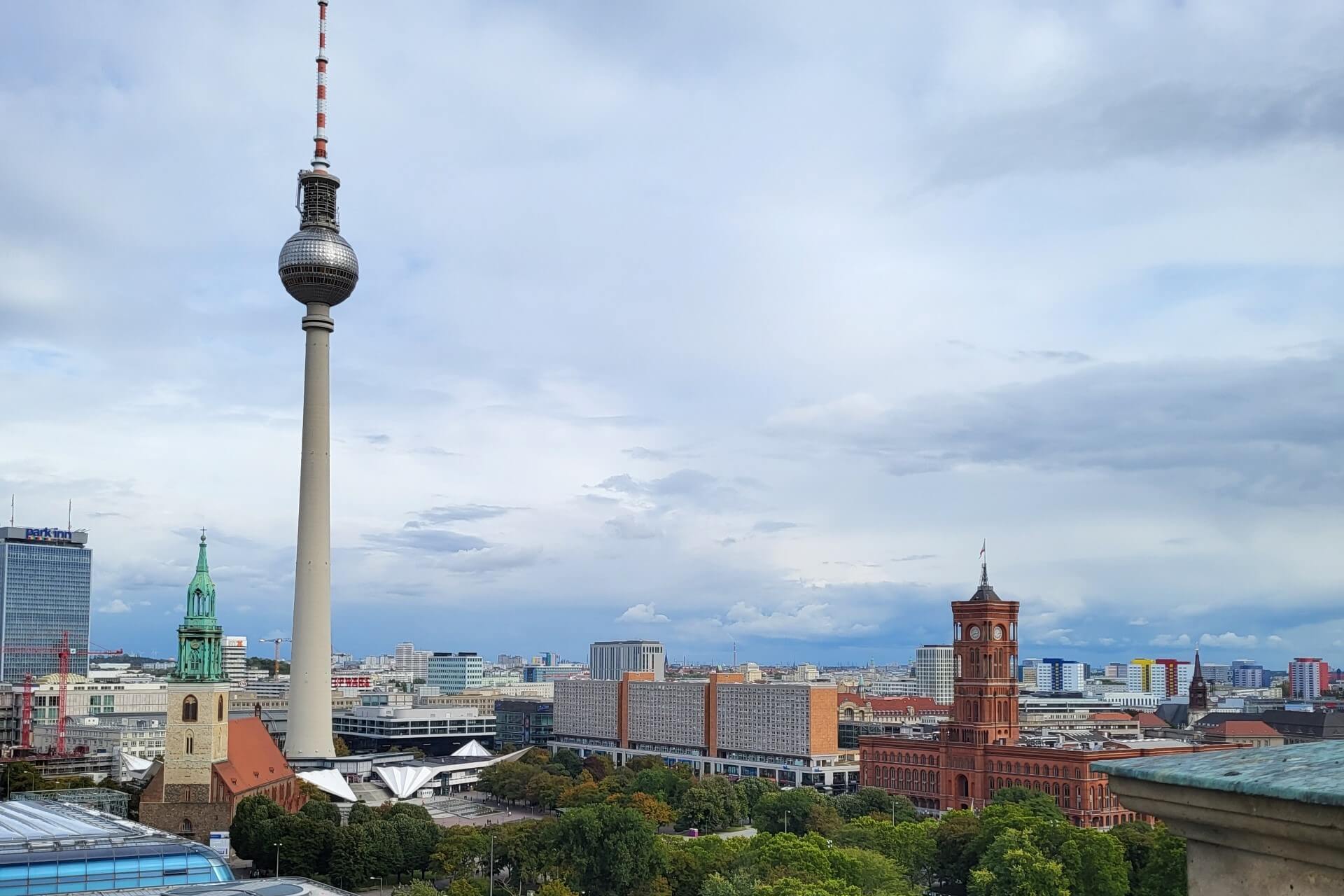
Berlin’s history dates back to the 13th century. The origin of the name of the area, where the tribes of the Polabian Slavs lived in the first millennium BC, has two versions. According to one of them, the city is named after the bear (German: Bär). Another theory says that the name of the future capital was given by the Slavic word “berl”, which means”dam”.
In 1432, the settlement of Berlin, located on the eastern bank of the Spree, and Cologne, located on the territory of today’s Museum Island, became one. In 1701, Berlin was chosen as the capital of Prussia, and in 1871-of the German Empire. The Second World War led to numerous destructions and the division of the city into four zones of occupation. In 1961, the infamous Berlin Wall came into existence. Berlin regained its status as the capital of Germany in 1991.
How to get from the airport to the city center
Terminals 1 and 2 of the Berlin Brandenburg Willy Brandt (BER) air Port are located 25 km from the center of the capital on the territory of the state of Brandenburg. Airport Express trains (FEX) and regional trains (RE8, RB23, RB32 and RB24 Nord) run several times per hour between Berlin and Flughafen BER Airport train station. The S-Bahn S9 and S45 lines run every 20 minutes. To travel, you need a ticket of the BC or ABC fare zones.
Of course, it is easier to get to the city by taxi-the transfer time will be 30-45 minutes. We do not recommend that you take buses to the city center — as you will have to make several transfers.
Rent a car in Berlin
If you are an active tourist who has a valid driver’s license and does not want to depend on public transport, then the best choice for traveling not only in the German capital, but also throughout Europe is to rent a car. Its advantages include independent route planning and the ability to return the car in another city.
Both airports have offices of major European car rental companies. The cost of a car starts from 25 euros per day. You can rent a car either upon arrival in Berlin, or remotely, on the website of well-known companies or local aggregators, specifying the desired make, color and type of gearbox in the application.
To rent a car, you will need:
- driving experience of at least one year
- driver’s license
- bank card with the required amount for the deposit and insurance premium
- knowledge of the promotion route and route features
Important! Many car rental companies require an international driver’s license.
Where to book a hotel in Berlin
The area of Berlin is 891.8 km2. About 800 hotels are located on it. Choosing a hotel is not an easy task, given that not all districts of the German capital are suitable for a comfortable and safe stay of tourists. It’s no secret that the number of migrants in the metropolis is growing every day. The good news: the bulk of the “new Berliners” live in several areas, the most dangerous of which are Neukeln, Kreuzberg, Wedding and Marzahn.
Hotels in the city center

Historically, the capital of Germany has three centers. The first one is located at the intersection of two districts: Mitte and Tiergarten. This place is easily recognized by the Reichstag and the Brandenburg Gate. The most fashionable hotels are also located here: Adlon, Grand Hayat, Ritz Carlton. We advise you to take a closer look at the modern heart of Berlin — Potsdamer Platz, where you can find restaurants, shops, entertainment centers and hotels suitable for any budget.
The second center — east — is Alexanderplatz, the third-west-Wilmersdorf-Charlottenburg. Hotels in these areas are chosen by those who came to see the sights, and those who arrived in the capital on business. Shopaholics like to stop in Charlottenburg — the shopping mecca of Kurfürstendamm Street passes here.
Zehlendorf and Grunewald
Small hotels with excellent service can be found in the south-west of Berlin, where mostly well-off citizens of the city live. Local hotels will be loved by connoisseurs of quiet, measured life and unhurried walks along the shores of lakes. An additional advantage of these areas is the proximity of Potsdam.
Transport in Berlin
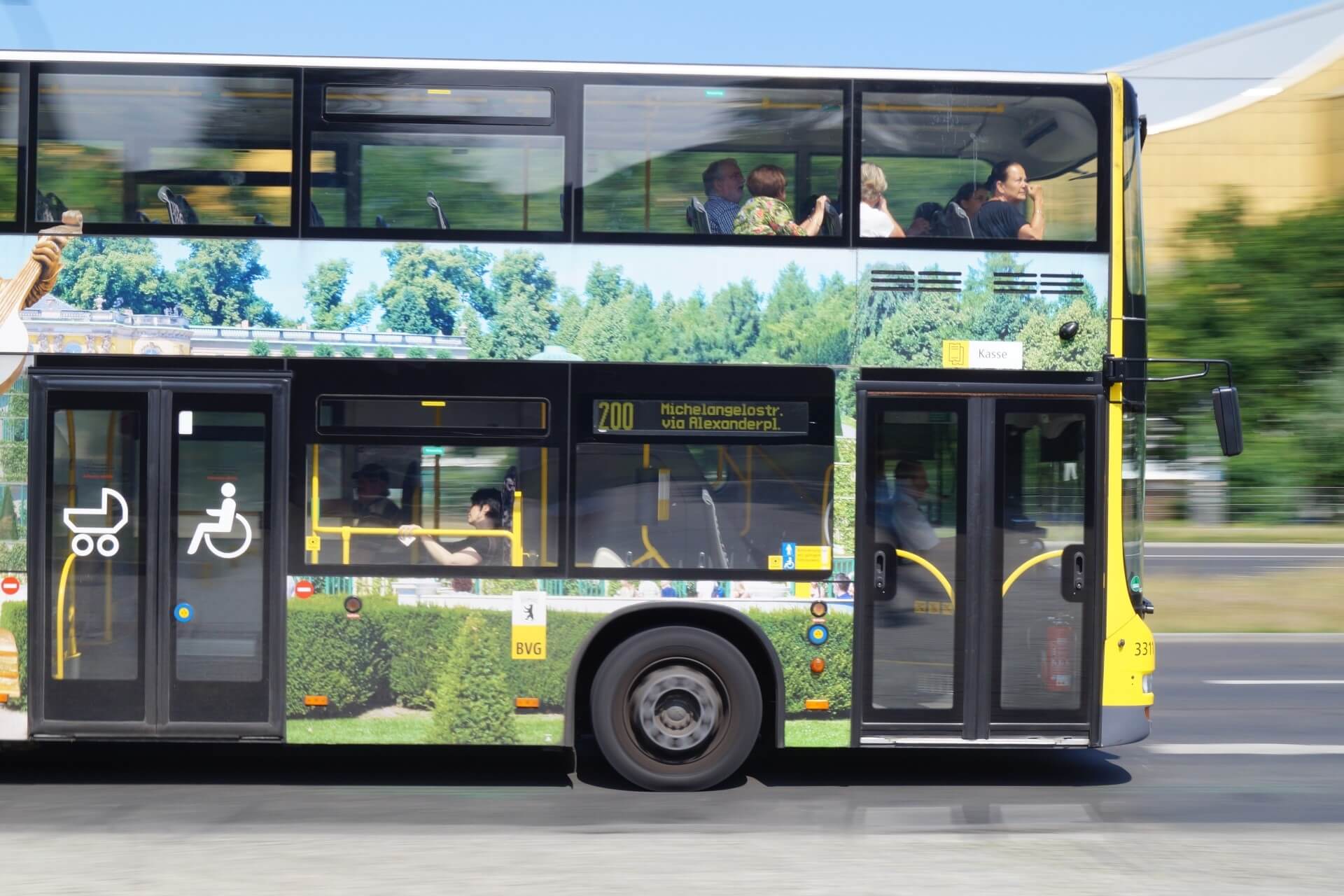
Berlin has 3.5 million inhabitants, 12 counties, 96 districts and endless opportunities to get from point A to point B. At first glance, the city’s tangled network of commuter trains, subways, buses, and trams looks rather chaotic. We will bring some light to the darkness and introduce you to the city’s public transport.:
- S-Bahn. Typical red and yellow electric trains are one of the main means of transport. There are 15 lines in total.
- U-Bahn. Metro trains are painted yellow and move underground. The network consists of 10 lines and 173 stations.
- Double-and single-deck yellow buses run on 198 routes.
- The Straßenbahn (tram) is common in east Berlin and has 22 routes.
Passenger transportation means are as punctual as the Germans themselves: if the board says that the train will arrive in five minutes, be sure that you will enter the car in five minutes. The transport network is divided into three tariff zones:
- A: inside the city ring
- Q: from the ring to the city limits
- C: 15 km from the Berlin border, including Potsdam
The ticket purchased for the trip is valid for 120 minutes and is suitable for any type of transport: you can change from the metro to the bus and back any number of times, but you do not have the right to return to the starting point of the trip. The fare depends on the selected zone.
- Standard travel card (Einzelfahrschein):
- AB rate: 3,50€, reduced 2.20 €
- Sun rate: 4.00€, reduced 2.70 €
- ABC rate: 4.40€, reduced 3.20 €
- Children under 6 years old — free of charge
- Short distance ticket (Kurzstrecke). Valid for 3 S-Bahn and U-Bahn stops or 6 bus and tram stops. The price is 2.40 € regular and 1.90 € reduced.
- Daily travel card (Tageskarte). During the day, you can make any number of trips and carry three children under 14 years of age:
- AB: 9.90€, reduced 6.50 €
- SUN: 10.40€, discounted 6.80 €
- ABC: 11.40€, reduced 7.00 €
- 7-day card for one person (7-Tage-Karte). Valid for seven calendar days from the date of confirmation:
- AB: 41,50 €
- SUN: 42.50 €
- ABC: 49,00 €
- One-day group card for five people (Kleingruppen-Tageskarte):
- AB: 31,00 €
- SUN: 32,00 €
- ABC: 33,00 €
Prices are shown as of September 2024.
Nuances of Berlin transport:
- The driving interval is 7-20 minutes. Between 1:00 and 4:30, you can only travel around the city by night buses.
- Tickets are sold at the yellow or red vending machines located at each station, or at the ticket offices of the BVG (Berlin Transport Company). Don’t forget to compost your purchased ticket in the validator! Otherwise, you will pay a fine starting from € 60 (as well as for a stowaway ticket).
- Train doors open with a lever or a green button.
If you want to use a taxi service, please call (030) 202020. As of 2024, the base fee is 4.30 euros, the price per kilometer is 2.10-2.80 euros. Please note that parking and waiting times are subject to a charge of EUR 39.00 per hour.
Where to go and what to see in Berlin
There are so many interesting places in the metropolis that it will take less than two weeks to get around them. To help you get to know the city better, we have prepared descriptions of tourist and cultural sites that deserve special attention.
Attractions
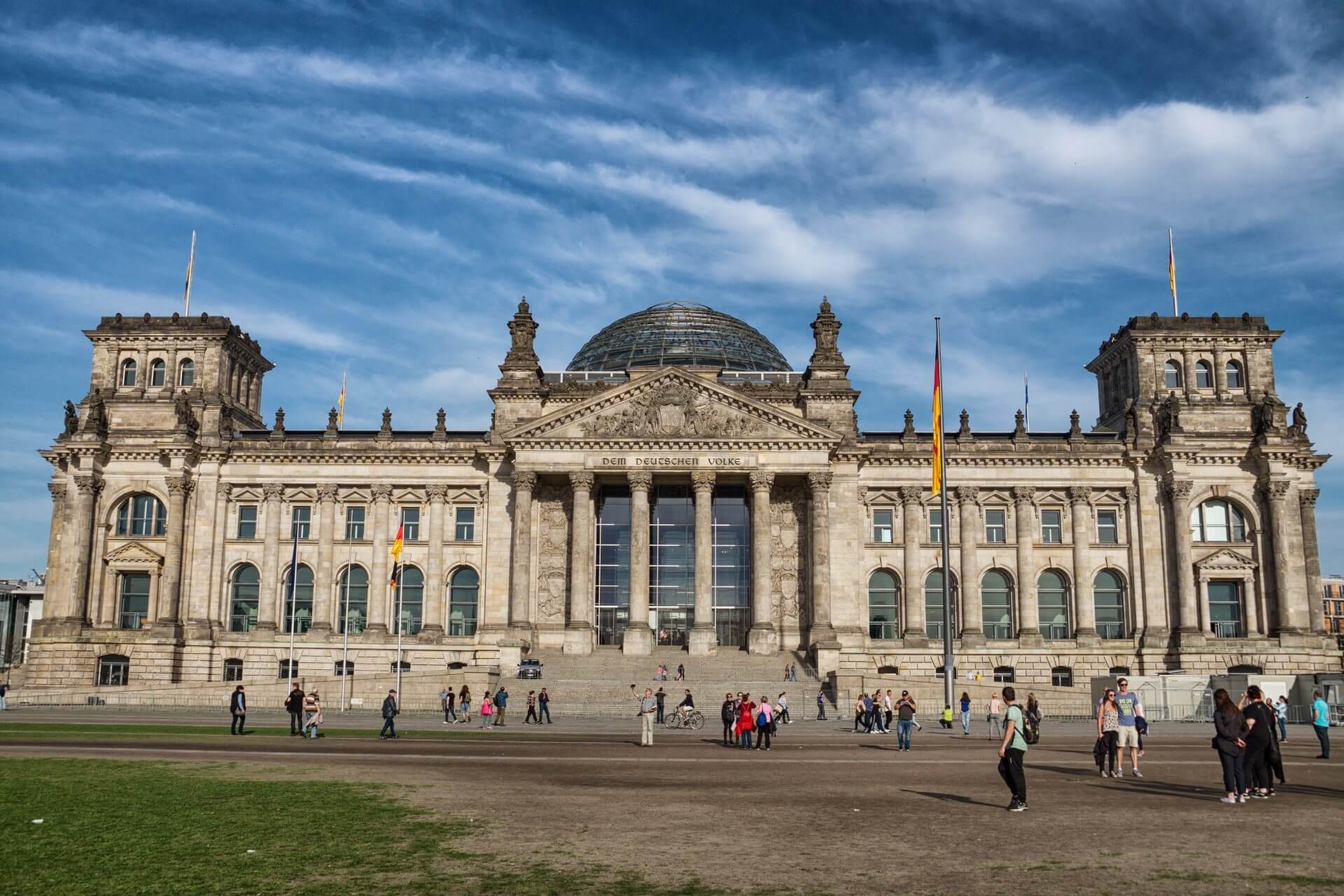
The Reichstag, located on the banks of the Spree, has a complicated history. Built in 1884, the massive structure was badly damaged during the storming of Berlin and was restored in 1972. Now the Reichstag is the meeting place of the Federal Assembly of Germany. Attention of tourists! In order to visit the interior of the building, you need to pre-register on the official website of the Bundestag www.bundestag.de/besucher. Адрес: Platz der Republik 1.
The Brandenburg Gate is a triumphal arch decorated with a quadriga. The landmark, built in 1791, is located at the intersection of the Tiergarten and Mitte districts and is a symbol of Berlin. Address: Pariser Platz, 10117.
Charlottenburg Palace is a historic gem of the Charlottenburg-Wilmersdorf district. The luxurious Baroque castle is not only an architectural masterpiece, but also a museum that introduces the life of the kings of Prussia. The structure is framed by a 48-meter-high tower with a dome and is surrounded by a picturesque park. Address: Spandauer Damm 10-22.
Museums
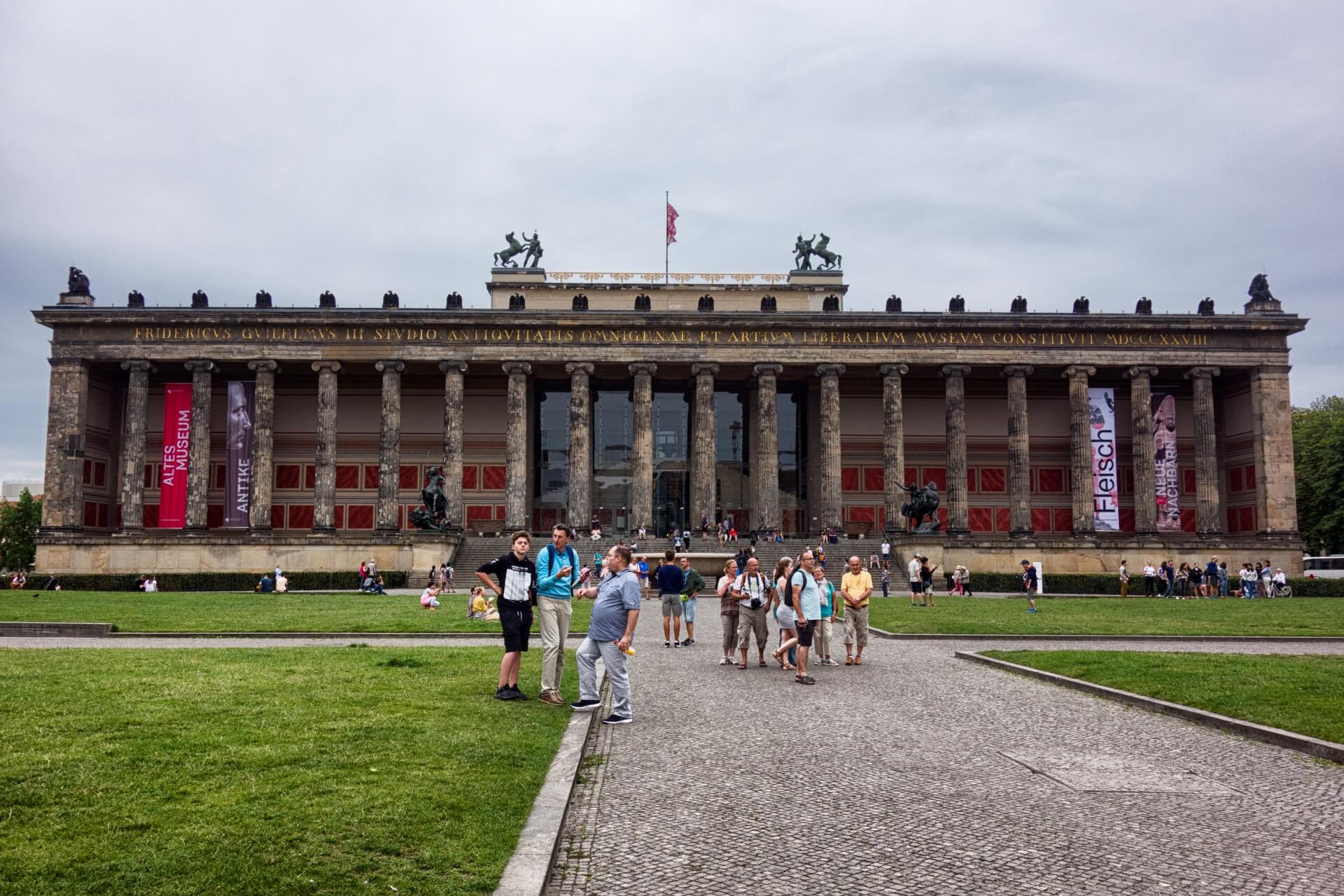
The Museum Island, located on a piece of land formed by the River Spree — is a unique architectural ensemble that took 100 years to build. It is completed by the Berlin Cathedral — the main evangelical church of Germany and the resting place of members of the Hohenzollern royal dynasty. The historic quarter consists of five treasures.
- Old museum, built in 1825-1830 and displaying artifacts from Ancient times: jewelry, sculptures, and weapons. The prelude to this priceless gathering is a rotunda modeled after the Roman Pantheon.
- The new museum contains an Egyptian papyrus collection and the famous bust of Queen Nefertiti.
- In Pergamon, you can admire archaeological finds found in the territory of Asia Minor, the Ishtar Gate, elements of the Babylon Road and the impressive Pergamon Altar.
- Bode focuses visitors ‘ attention on the sacred art of Byzantium and European sculptures from the Middle Ages to the 18th century.
- The Old National Gallery exhibits 19th-century sculptures and paintings.
The Natural History Museum has a rich collection of about 30 million specimens. There are skeletons of ancient lizards, mock-ups of insects, stuffed animals from all over the world, galleries that introduce the development of the universe and man, and a large collection of minerals and precious stones. Address: Invalidenstraße 43.
The Berlin Wall Museum is located on Friedrichstrasse 43-45, next to the former Checkpoint Charlie Checkpoint. In the halls are displayed archival documents telling about the construction of a concrete structure, and the devices with which the inhabitants of the GDR moved to the western side.
Berlin Top-Rated Museums: 12 Best Picks To Explore
Squares
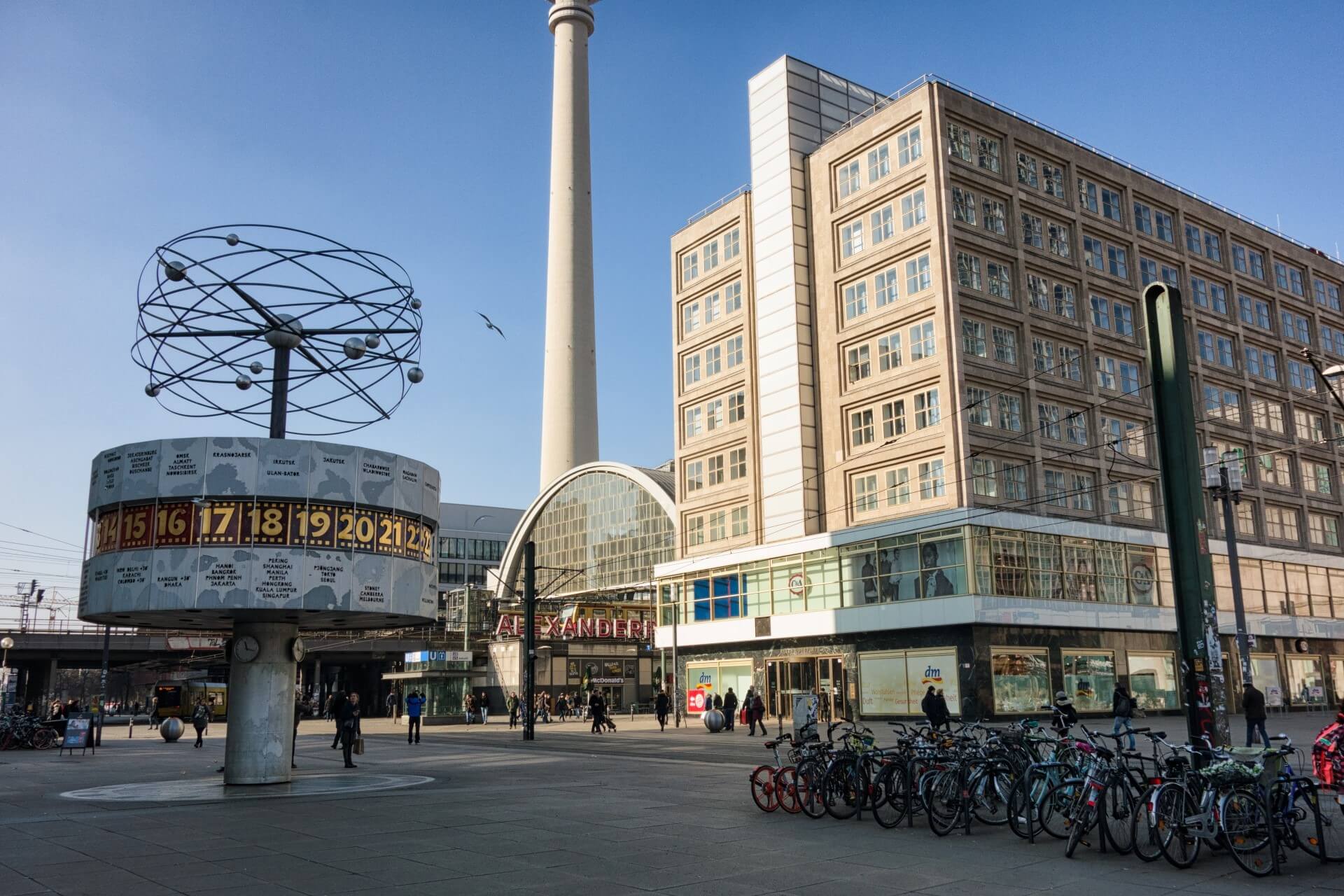
Alexanderplatz is one of the main transport hubs and a square named after Emperor Alexander I of Russia. This place is unique in that it includes both historical sites and architecture from the GDR period. Important sights are located here: the Peace Clock, the Red Town Hall, the oldest church in the city, the Church of the Virgin Mary, the Neptune Fountain and the TV tower, which rises 358 m into the sky. At an altitude of 203 meters, there is an observation deck and a panoramic restaurant.
Potsdamer Platz was built in 1838, destroyed in 1945 and restored at the end of the last century. Modern architecture, numerous cultural events and many attractions in the surrounding area make the newest quarter particularly attractive for tourists. Here you will find fragments of the remains of the Berlin Wall, cinemas, casinos, the Sony Center complex, a theater and skyscraper towers.
Gendarmenmarkt is considered one of the most beautiful squares in Europe. It has a Concert hall and two twin cathedrals: French and German. During the four weeks of Advent, the Gendarmenmarkt turns into the main Christmas market of the metropolis.
Parks
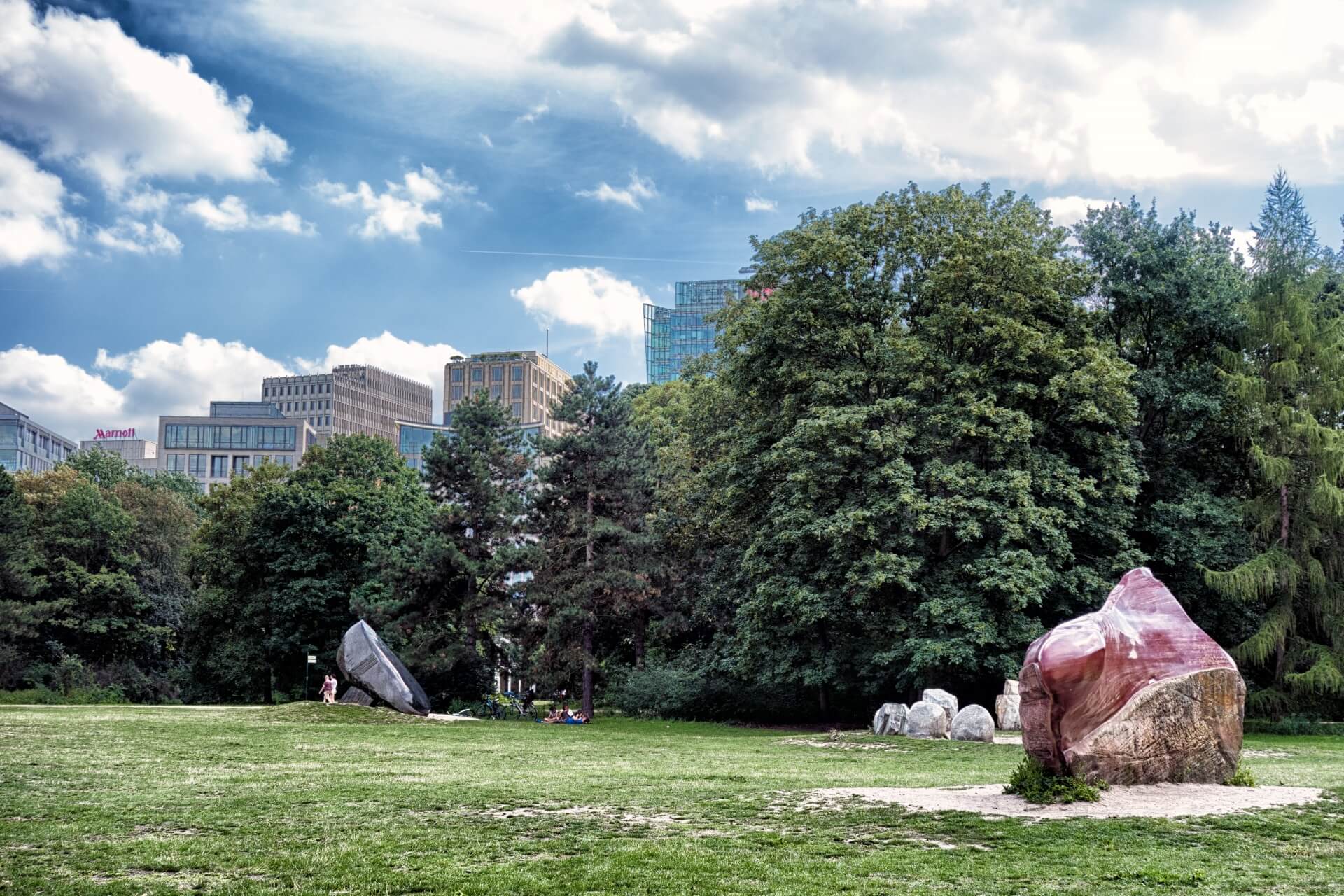
Tiergarten is like a green island between Potsdamer Platz, the Government Quarter and the Brandenburg Gate. At the end of the 17th century, Elector Frederick III ordered the former hunting grounds to be turned into a walking area for the townspeople. Between 1833 and 1838, the Tiergarten acquired the features of an English landscape park. The main attraction for Russian tourists is the memorial to Soviet soldiers who fell during the storming of Berlin.
The Botaniescher Garten in the Dahlem district in the south-west of the capital will seem like a blooming paradise with a 325-year history. Covering an area of 43 hectares, it is one of the largest botanical gardens in the world. The collection, which includes about 22 thousand plant species, grows in sculptured landscapes and greenhouses, the largest of which-tropical-has a volume of 40 thousand m3. The addition to the garden is a museum that introduces visitors to the basics of botany in an accessible form.
Gärten der Welt is an unusual park complex located in the Marzahn district. On 43 Hectares, visitors will find landscapes that combine the garden art of five continents. Here you will find flowerbeds planted with rare plants, a glade of fairy tales, an exotic Chinese garden with a carp pond, and a Spicy garden with fragrant herbs. Access to the Peace Gardens is via the cable car that connects the green area with the Kienberg U-Bahn station (U5).
Entertainment in Berlin
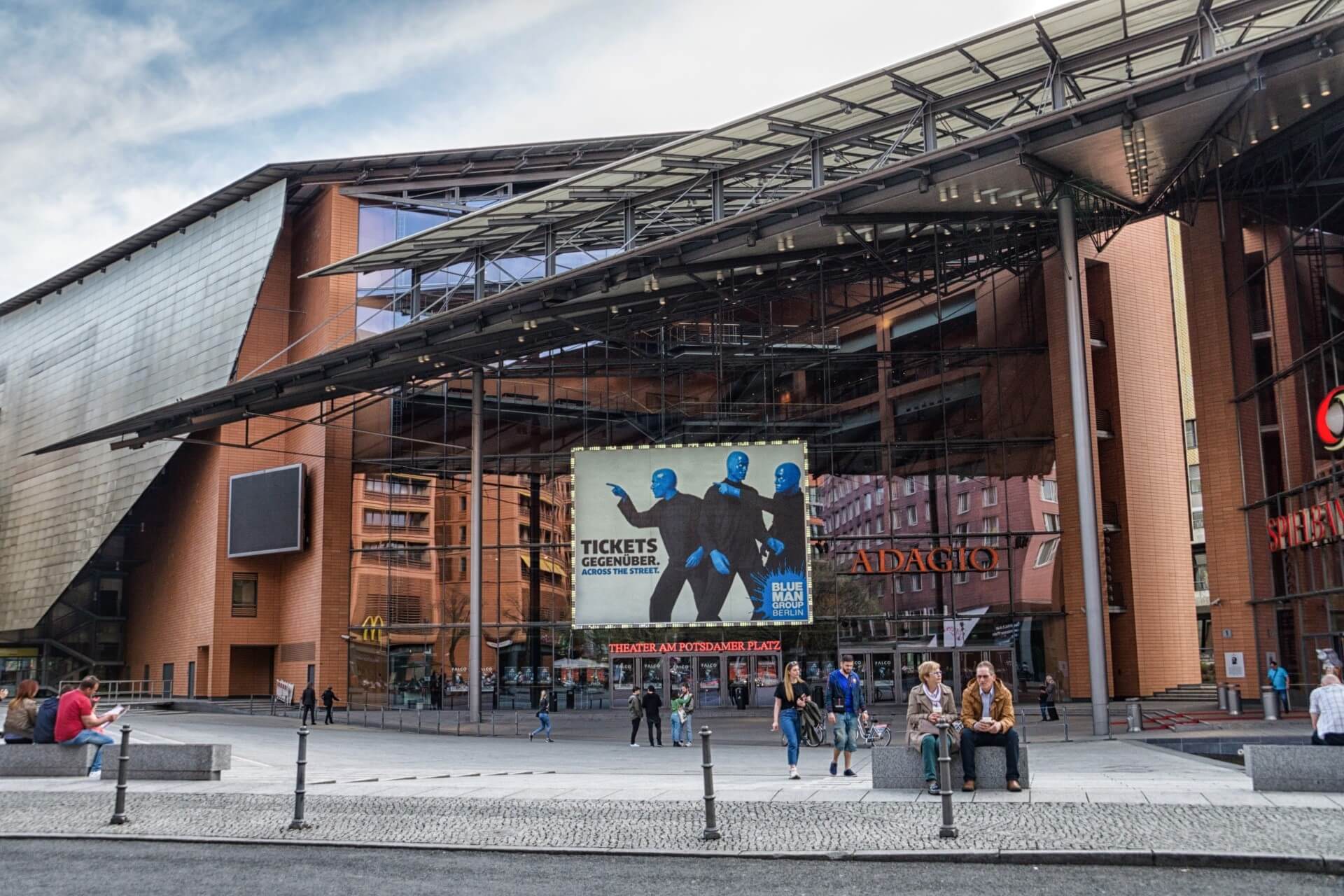
Being in the capital of Germany, you will never wonder about leisure activities. Megapolis offers round-the-clock entertainment. During the day, there are music concerts, art festivals, shows, musicals and street exhibitions, and in the evening — bars and nightclubs. In December, the doors are opened to the shining lights of the Christmas markets. In February, connoisseurs of progressive cinema flock to the Berlinale International Film Festival.
The Friedrichstadtpalace show is a fantastic performance that delights with modern scenery, incendiary variety shows, dance and circus performances, bright costumes and spectacular effects. The hall is unique — an extravaganza of sounds and colors can be clearly seen and heard from any place. Performances are held in the Friedrichstadtpalast Revue Theater building at Friedrichstrasse 107.
The Blue Man Group on Potsdamer Platz is like Berlin itself: creative, impulsive and a little crazy. During the production, the blue people do something unimaginable: they play trumpets and drums, perform magic tricks, act out improvised scenes, and communicate with the audience. Attention! Give up the front row seats, otherwise you risk getting your clothes dirty with blue paint.
Berlin’s night clubs are known all over the world, and it is not for nothing that the metropolis is called the club capital of the planet. There are both closed and public hangouts, places for fans of disco, techno and other styles. Berghain, Watergate, 90 Grad, Adagio, Matrix are the best places to experience the full nightlife experience.
Berlin for children
The city is not an ideal place to relax with kids, but children from 7 years old have something to see here. Berlin has prepared a lot of educational and entertainment programs for its young guests.
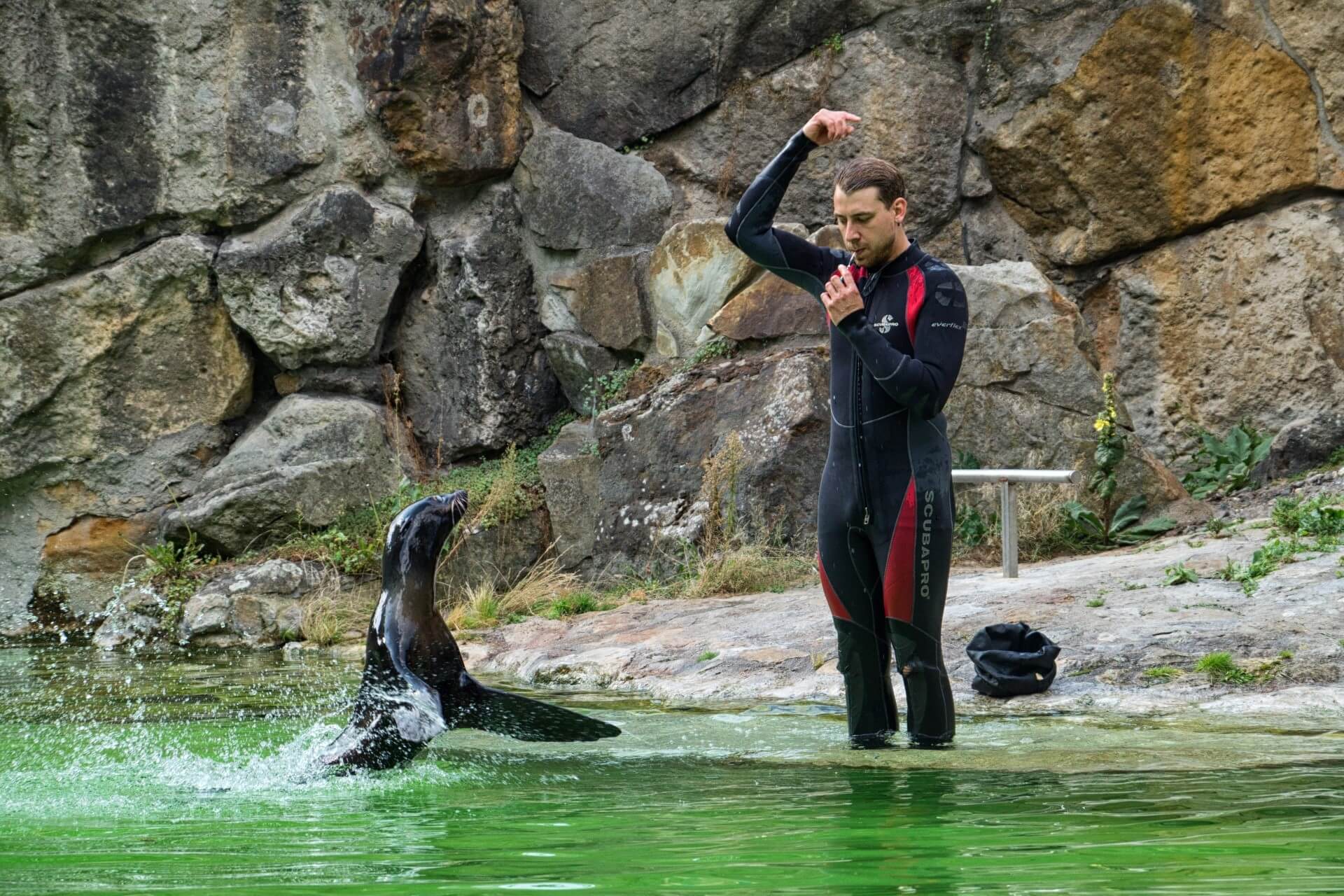
Zoo on Hardenbergplatz 8 near the Zoologischer Garten train station. On the compact territory there is a three-story aquarium and spacious aviaries, where about 17 thousand representatives of fauna live. Children will be delighted with the petting and feeding pen, the huge playground and the fur seal show. By the way, there is also a second zoo in Berlin, located in the eastern part of the metropolis at the address: Am Tierpark 125.
Legoland. The museum on Potsdamer Platz presents a diverse program: your child will create their own Lego sculpture, get acquainted with the layout of the German capital made of a million elements, watch an animated film, wander through the mazes of a fairy-tale castle and meet animated characters made from designer parts.
The whole family will be interested in the Technical Museum. Adults will love models of marine, air, and land transport vehicles, spacecraft, machine tools, and photo and video equipment. Children will be happy to take part in research experiments, play ball with the wind and create tin soldiers. Address: Trebbiner Strasse 9.
Prices in stores and restaurants
Berlin is a democratic city. Along with luxury grocery stores and high-end restaurants, there are many inexpensive shops and cafes. The capital has a well-developed network of discounters and public catering establishments that are unlikely to empty your wallet. We have prepared for you an overview of prices for basic services and products.
Cost of food products
The most acceptable supermarkets are ALDI, REWE, LIDL, EDEKA. Average prices (euros) as of September 2024:
- liter bottle of water-0.85
- bread (500 g) — 2,3
- milk (1 l) – 1,3
- oil (250 g) — 3,2
- cheese (500 g) — 9.20
- sausage and ham (500 g) — 10.20
- eggs (10 pcs.) – 2.60
Restaurants and cafes
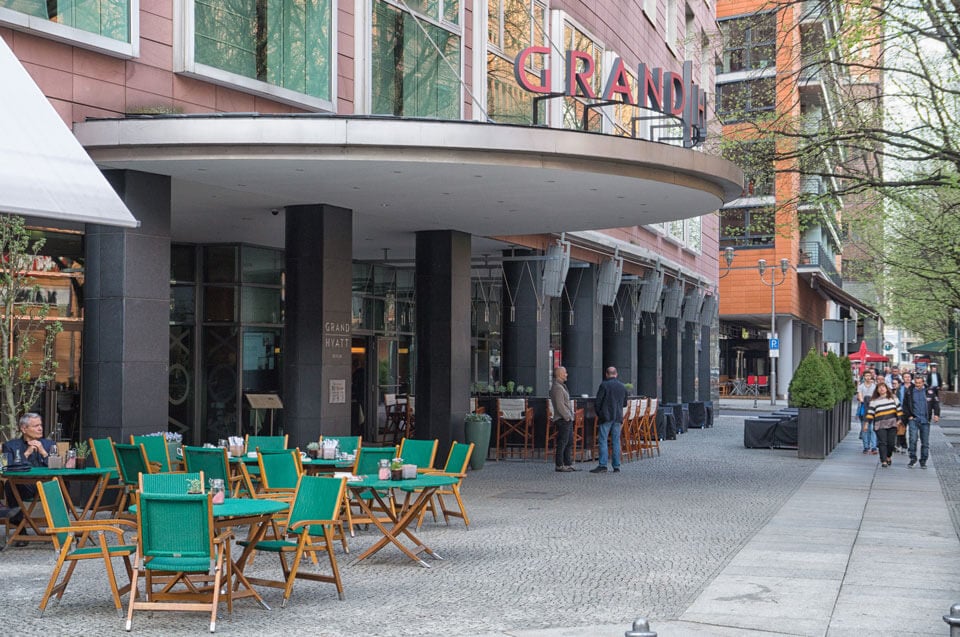
Cheap and delicious food in Berlin can be found in the chains of bistros, Asian eateries and Biergarten-traditional open-air beer halls. GuruTurizma recommends beef steaks at Block House, fish appetizers at Nordsee and Vietnamese chicken noodles at SaiGon-Today on Wilmersdorfer Str. 69. The bill amount is between 8 and 15 euros. And do not forget that the Germans masterfully prepare fried sausages and curry sausages. This snack is sold in special kiosks scattered around the city. The price of one serving is 4-10 euros.
To visit Germany and not try national cuisine is a crime. Enjoy a live beer and a taste of knuckle, sauerkraut and potato salad at the Lindenbrau in the Sony Center on Potsdamer Platz or at the Brauhaus GEORGBRAEU in Nikolaiviertel. Lunch here will cost 20-50 euros.
Berlin will not disappoint wealthy guests either. Fine haute cuisine is served by Bocca di Bacco at Friedrichstrasse 167, Lorenz Adlon Esszimmer at the Adlon Hotel or Heising at Rankestrade 32. You will pay at least 60 euros on the invoice.
City tours
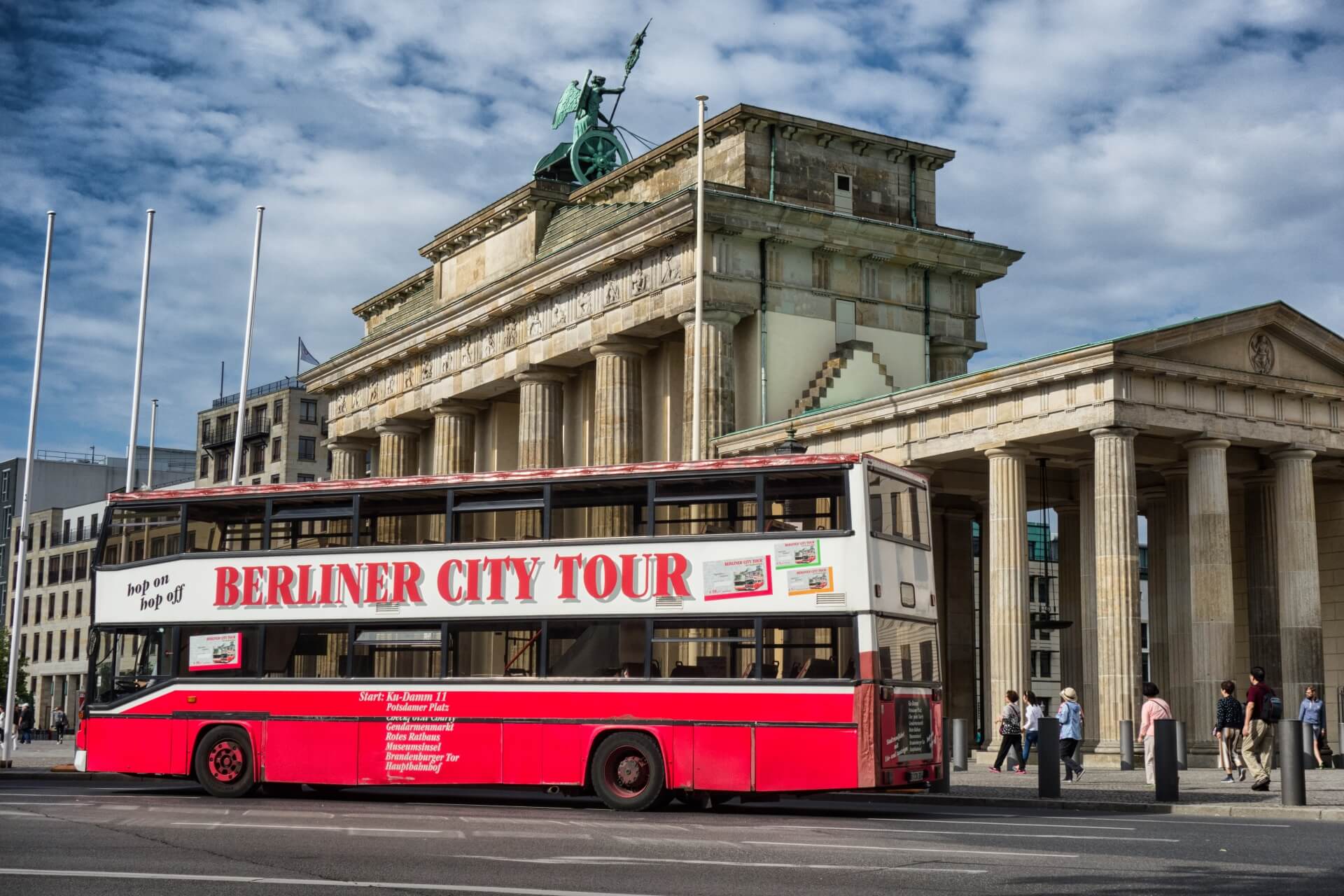
If you don’t find the knowledge you’ve learned in travel guides sufficient, then the best way to get to know Berlin is to book a group tour. They can be:
- Overview (multi-shadow): they cover several districts and attractions at once and allow you to get a general idea of the objects of interest.
- Thematic sections from A to Z will fully cover one topic. They are divided into historical, architectural, and cultural categories.
- Field trips. Take a bus ride and explore the surrounding area of Berlin. You can visit Potsdam or take a boat ride on the rivers of the German Venice-Spreewald.
If you are not a fan of noisy companies and want all the attention of the guide to be devoted only to your person, choose private tourism with your own guide, who knows the metropolis very well. On the site tripster.ru you will find many interesting routes: from standard sightseeing to gastronomic and shopping tours.
Tips from a local
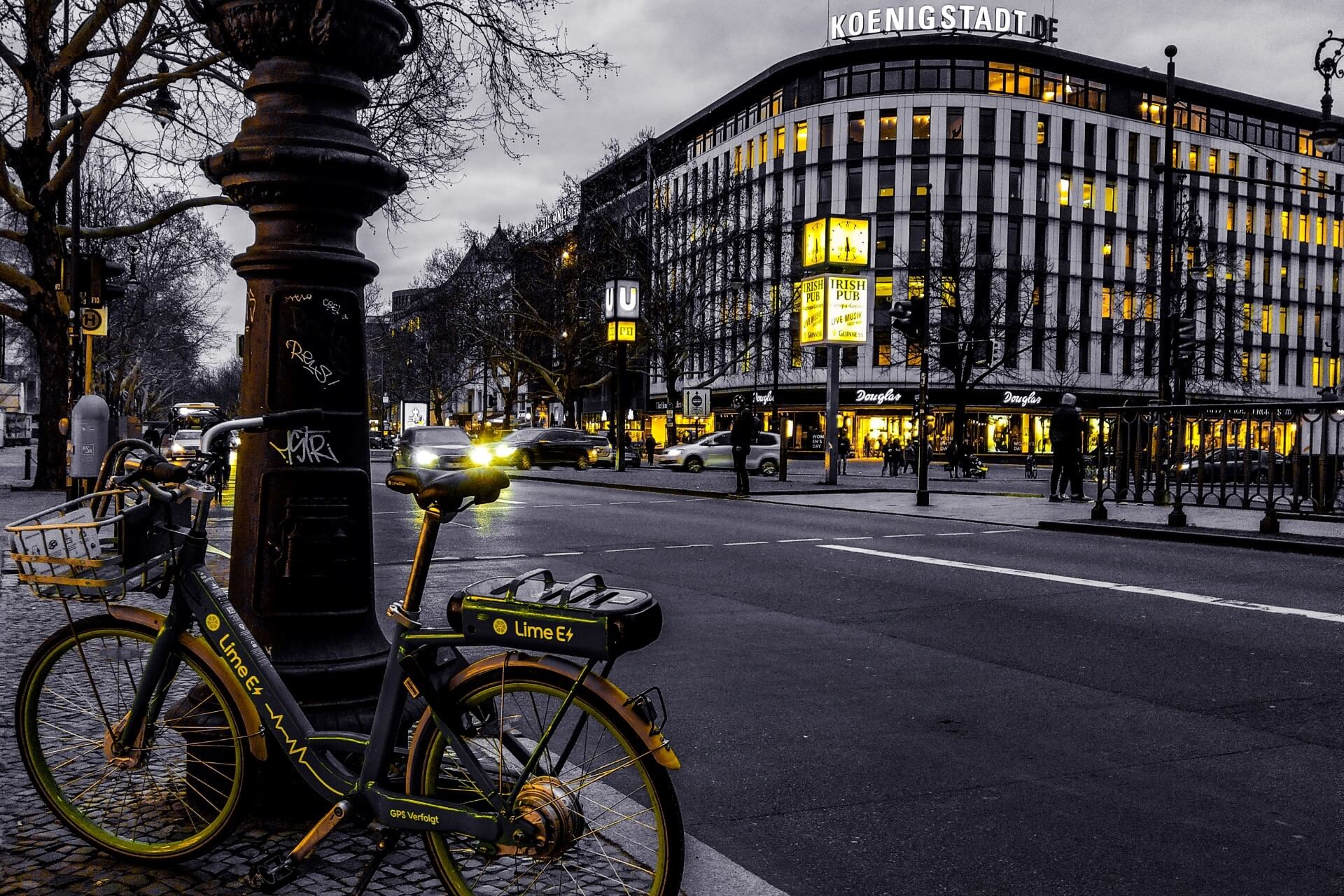
Who knows the city better than the people who live in it? Real experts from Berlin — local residents-will help you give useful tips and life-making information, tell you about the features of the metropolis and how to save money.
A wonderful opportunity to reduce your travel expenses is to purchase Berlin CityTourCard. It is sold in vending machines at metro and train stations, in information kiosks at airports, and on the website www.citytourcard.com. The card provides free travel in the ABC zones and up to 30% discount on entrance tickets to 10 museums.
When walking on the streets, be careful not to enter the bike paths laid on the sidewalks. By the way, renting a bike is a good way to see the sights and at the same time tighten your muscles.
Rain is a frequent visitor to Berlin. On a cloudy day, take a Hop-on Hop-off tour bus (price as of 2024 — 30 euros). Expensive? Then take the No. 100 bus, which runs past the Reichstag, Brandenburg Gate, Alexanderplatz and Bellevue Palace, the residence of the German President.
To have a snack during the day, you don’t have to go to a cafe. You can have a delicious and budget lunch in the foot courts of large malls: Alexa, Potsdamer Platz Arkaden, Mall of Berlin. The quality of the food offered is great and the price is low.
Tip for shopaholics. Before storming the famous shopping centers (KaDeWe, Galeria Kaufhof, Mall of Berlin, Karstadt, Peek & Cloppenburg), check out the TK-Maxx outlet. It offers a huge selection of clothing, shoes, accessories and household goods at very attractive prices. And remember that all stores are open from Monday to Saturday.
To see the German capital from a bird’s eye view, you need to visit the TV tower and … stand in line for many hours. Don’t want to waste your time waiting? Then pay 27.50 euros and book a table in a restaurant located at an altitude of 203 m.
If you want to travel from Berlin to Dresden or wander along the Baltic Sea coast, buy tickets for a comfortable FlixBus bus.

